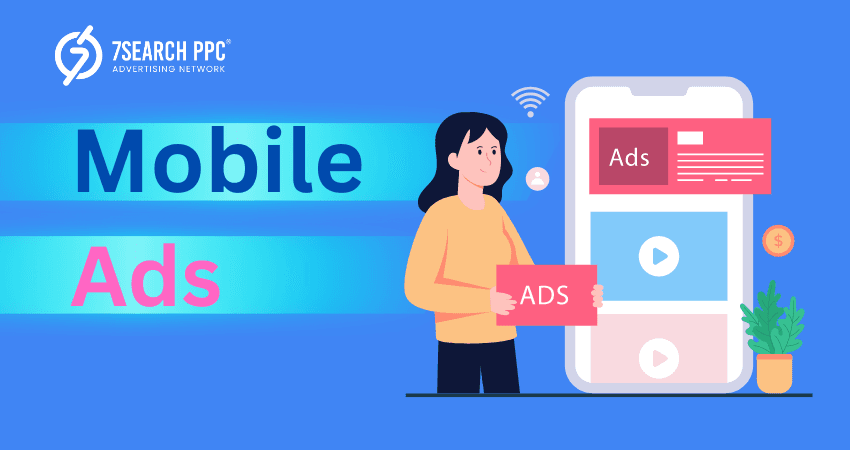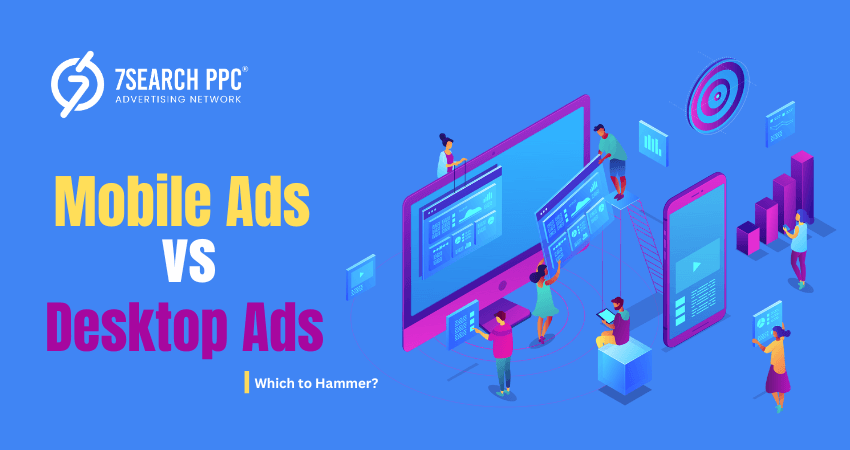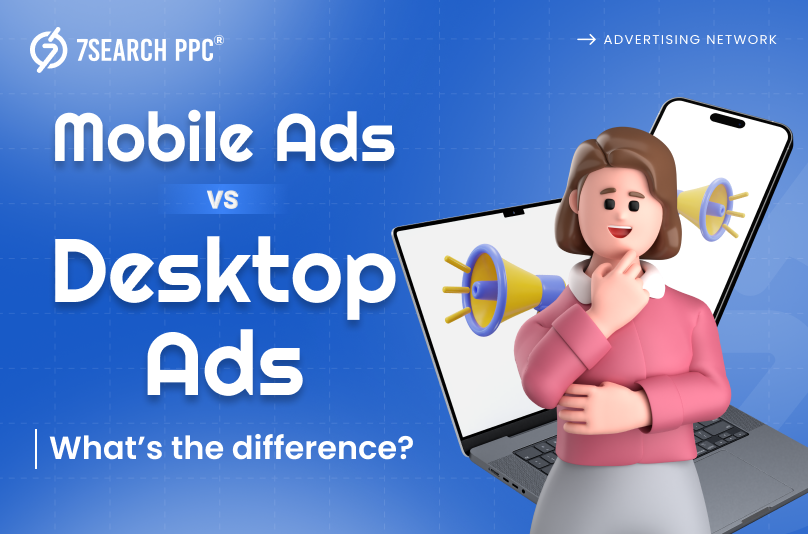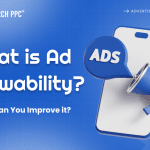One day, we were curious about the number of people who use the internet daily. After searching through articles and blogs, we found that there are 5.44 billion internet users worldwide (source-Statista), which represents 67.1 of the global population (as of April 2024). This data is quite interesting, isn’t it? As advertisers, we always focus on where we can capture the most attention, and digital platforms are ideal for this. These digital spaces can be effectively targeted through desktop and mobile ads.
It is tough for you to decide which version of digital advertising is beneficial for your business between mobile and desktop ads. Some may say desktop advertising is better than mobile advertising and vice versa. Friends, the selection only depends on your digital advertising goals.
Let us solve this puzzle for you. In this blog, we will compare desktop ads and mobile ads and tell you how to make the best choice for your ad campaign.
Mobile Ads: Small Size Ads That Make a Big Difference
Currently, there are over 7.2 billion smartphones in use worldwide, and this number is expected to grow in the coming years. This accounts for a 69% smartphone penetration rate, based on a global population of approximately 7.4 billion. Moreover, more than 4.14 million mobile phones are sold every day around the world (source- Exploding Topics). But why are we sharing this with you? To divert your focus towards mobile ads because the stage is set for promoting your business.

Mobile advertisements are specifically designed by advertisers to attract mobile traffic. These ads can show up in various formats, such as banners, interstitial ads, and more. Mobile advertisements are tailored for small screens and often use features like touch or swipe to ask users to attempt action. They’re popular because many people spend a lot of time on their mobile devices. Brands use these ads to reach users who use mobile devices for browsing, shopping, gaming, etc.
Why Are Mobile Ads So Important?
Mobile advertisements have become an indispensable part of digital advertising efforts for several key reasons:
Massive Audience Reach and Unwavering Engagement
Mobile devices have become an important part of our lives. People spend countless hours on their phones, which makes it an ideal platform for brands to reach a wide audience. On average, individuals spend 3 hours and 15 minutes on their phones each day and check their phones about 58 times daily. Mobile ads offer advertisers the advantage of high smartphone usage by delivering messages directly to consumers’ fingertips when they are most engaged.
Helps in Improving Brand Loyalty
There are more than a thousand sports brands in the world, so why do most people go with Nike, Adidas, and Reebok despite the fact that some of the sports brands offer better quality sports gear? This is because customers are loyal to the brand, and mobile ads are experts in providing this benefit to brands that utilize them strategically. It helps brands to make a good impression in front of the mobile audience through ads and convince them that their products are superior to others.
Quicker Loading Time
Ads that take too much time to load provide a bad experience for viewers, and no one wants that. When you compare mobile ads with desktop ads, you will find that mobile advertisements load quickly and deliver messages to the audience without taking much time. This provides a good user experience, making viewers more likely to spend their valuable time watching ads and completing the desired actions.
When ads load slowly, they can frustrate users and even lead them to use ad blockers. Mobile ads are specifically designed to load quickly, which delivers their message without disrupting the user browsing experience. This is very important for keeping users engaged and preventing them from becoming tired of seeing digital ads. Faster loading times also result in better ad performance and higher click-through rates (CTRs).
Campaign Effectiveness with Location-Based Targeting
Mobile ads enable highly effective location-based targeting. By using GPS and other location services, advertisers can deliver ads relevant to the user’s current location, which improves the chances of engagement and conversion. This geo-targeting capability allows businesses to:
- Tailor promotions to nearby customers
- Offer amazing deals or services for specific areas/locations.
By doing this, advertisers can drive mobile traffic to their online websites/apps, which is fruitful for their online advertising efforts.
Instant Accessibility and Convenience
On average, people spend 2 hours and 51 minutes a day on their computer screens, which is less time than they spend on their mobile devices worldwide. Mobile ads are famous for quick accessibility and convenience. Advertisers can instantly connect with consumers and tell them what they have for them through mobile ads.
Advertisers can start getting impressions on their mobile ads just after their ad campaign goes live, which makes them superior to desktop ads. Whether it’s a limited edition alert, a flash sale, or a personalized recommendation, you can take advantage of real-time opportunities through mobile advertisements.
Desktop Ads: A Thorough Look
Do you also think that desktop ads’ potential will lead to below-par scores in digital advertising? You are mistaken. Digital advertisements still have the power to provide you with the good results that you are looking for. In 2021, advertisers spent more than $54 million on desktop ads. Every year, the investment in desktop advertisements increases because of the results they provide to advertisers.
Desktop ads are digital advertisements displayed on computer screens. They come in various formats, including banners, native, and social bar ads. These ads are typically visible on websites and can include static images, animated graphics, and interactive content. Advertisers use them to reach a target audience and promote products or services. Desktop ads drive desktop traffic and generate revenue for website owners through pay-per-click or impression-based models.
What Makes Desktop Ads Special?
Ad formats are also available for mobile ads, and advertisers use them to attract their audience. But what makes desktop ads special? The click-through rate (CTR). As of October 2023, desktop advertisements generally get more clicks than mobile ads, with an average click-through rate (CTR) of about 0.9% for desktops compared to 0.6% for mobiles. However, how often ads are clicked can change based on the industry, platform, ad format, and where the ad is shown.
Desktop Ads: Worth It?
Still have a doubt, or does your mind control you to go in favor of desktop ads? Don’t worry. Here are some benefits of desktop advertisements that will help you understand why they are a great choice for promoting your products and services:
Higher Conversion Rates Through Focused Engagement
Desktop users are generally more focused and engaged when browsing online compared to mobile users. The larger screen and comfortable desktop environment allow for better absorption of information and more deliberate decision-making. As a result, people are more inclined to make a purchase or take the desired action after seeing a desktop ad. This leads to higher conversion rates for brands, as desktop users show stronger purchase intent and are more capable of processing ad messages effectively.
Offers a Sufficient Space for Creativity
Creativity in online ads requires sufficient space. Desktop ads provide advertisers with a larger space to showcase their offerings in a creative style. This spacious layout allows for more visually striking ad formats, which makes it easier to capture user attention than smaller mobile screens. Desktop advertisements allow advertisers to include interactive elements and content in a way that is engaging without being confusing. This is the perfect combination to win the audience’s hearts.
Minimizes Ad Fatigue
Desktop users are typically more engaged in focused tasks. They don’t like things that we call ad fatigue. Desktop ads help reduce ad fatigue because they can be designed to engage users in a more targeted way. When ads are tailored to the interests and behaviors of users, they are less likely to be seen as repetitive or annoying.
This means users are more likely to interact with them, as the content feels fresh and relevant to their needs. By refreshing and personalizing desktop ads, businesses can keep their audience interested and engaged over time.
Improved Ad Placement Control
Desktop ads offer better control over where ads appear, allowing for precise placement on websites. Advertisers can choose specific sections or pages where their ads will be shown, ensuring they reach the right audience. This level of control helps optimize ad performance by placing ads in locations that are more likely to attract attention and drive engagement, leading to better overall results.
Better Contextual Relevance
Desktop ads can be designed to match the content of the webpage (where they appear), making them more relevant to users. When ads align with the surrounding content, they blend in better and catch users’ attention more effectively. This contextual relevance increases the likelihood that users will find the ads interesting and useful, which can lead to higher click-through rates and more successful ad campaigns.
Desktop vs. Mobile Ads: Which to Hammer?
Desktop or mobile advertisements? Which one is perfect for your ad campaigns? There is no accurate answer because it all comes down to your advertising and business needs. Mobile ads are great if you’re targeting a younger audience or running a local business, especially with tools like geofencing. They are ideal for industries like real estate, automotive, art, entertainment, beauty, and e-commerce.

On the other hand, desktop ads are better for covering all types of audiences and are perfect for businesses needing consistent metrics or dealing with research-heavy products. The risk of accidental clicks is also lower on desktops. Industries such as education, finance, and nutrition can benefit more from desktop advertising.
In many cases, using a combination of mobile and desktop ads proves to be the most effective strategy. This approach allows you to engage a broader audience, take advantage of the strengths of both ads and maximize your ROI.
Optimal Ad Formats for Mobile and Desktop
When choosing ad formats for mobile and desktop, it’s important to consider user experience, engagement, and the specific objectives of your ad campaign. Here is a breakdown of optimal ad formats for each platform (Mobile and Desktop):
For Mobile:
Interstitial Ads
- Description: These ads are full-screen ads that appear at natural transition phase in the app, like during a level change in the game or between content pages.
- Why It Works: They grab the user’s full attention, making them highly effective for mobile environments. Users can interact with or close them easily, ensuring a high engagement rate.
Native Ads
- Description: Native ads are those ads that blend seamlessly with the app’s content, appearing as part of the feed or content the user is already engaging with.
- Why It Works: These ads are less intrusive and provide a smooth user experience. They are designed to match the look and feel of the app.
For Desktop:
Banner Ads
- Description: These ads look like rectangular ads that appear in dedicated sections of a webpage, such as the top, bottom, and sidebars.
- Why It Works: Banners are highly versatile and can display various types of content, including static images, animations, or interactive elements. They are effective due to their prominent placement and visibility on desktop screens.
In-Page Push Ads
- Description: These ads mimic push notifications but appear directly on the webpage, typically in the corner or near the bottom of the screen.
- Why It Works: In-page push ads are less intrusive than pop-ups but still grab the user’s attention. They are effective because they do not require user opt-in and can be designed to blend with the website’s layout while maintaining high visibility.
(It is important to test different ad formats and placements to determine the best-performing options for your specific audience.)
Conclusion
The choice between desktop and mobile ads depends on your advertising goals and target audience. Both offer unique advantages. Mobile ads are perfect for reach and engagement, while desktop ads boast higher conversion rates and better ad placement control. A strategic combination of both can often yield optimal results. Understanding your audience and testing different ad formats is crucial for maximizing your campaign’s effectiveness. So, which do you think is ideal for your campaign—mobile ads or desktop ads? We believe you found your answer in this blog. See you in our next blog—stay tuned!
Frequently Asked Questions (FAQs)
What are mobile ads?
Ans. Mobile advertisements are specifically designed for mobile devices like smartphones and tablets. These ads can appear in various formats, such as banners, interstitials, or native ads, and are optimized for smaller screens.
What are desktop ads?
Ans. Desktop ads are digital advertisements shown on computer screens, often in the form of banners, native ads, or social bar ads. They appear on websites and are designed to attract the attention of desktop users.
Why should I consider mobile ads for my business?
Ans. Mobile advertisements are important for your business because a large number of people spend significant time on their mobile devices daily. They offer massive audience reach, quick loading times, and the ability to use location-based targeting.
Can I use both desktop and mobile ads for my ad campaign?
Ans. Yes, using a combination of mobile and desktop ads can be very effective. It allows you to reach a broader audience and take advantage of the strengths of both platforms.
How do desktop ads improve conversion rates?
Ans. Desktop ads can improve conversion rates by targeting users who are more focused and engaged. It allows them to absorb information better and make quick purchasing decisions.


















